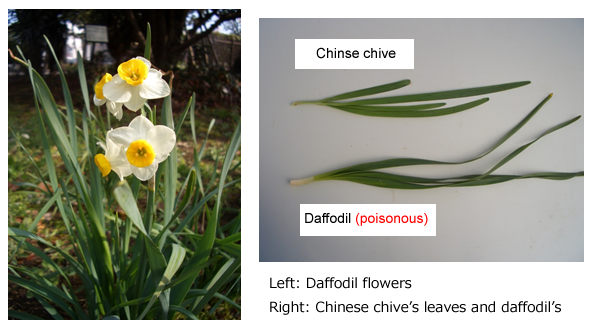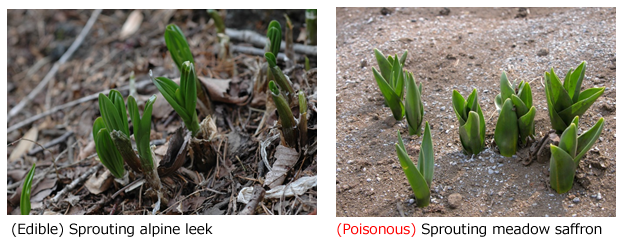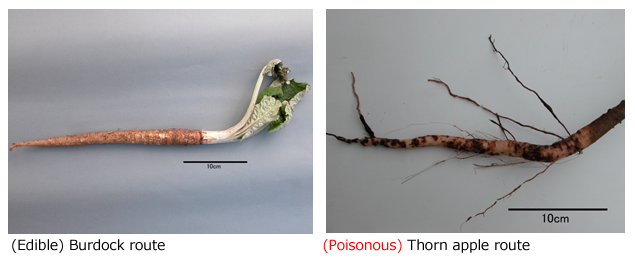Tokyo Food Safety Information Center » Tokyo Metropolitan Government food safety FAQ » What should I be cautious of when eating plants from my kitchen garden?
What should I be cautious of when eating plants from my kitchen garden?

What should I be cautious of when eating plants from my kitchen garden?

Many food poisoning cases have been caused by ingesting ornamental plants by mistake.
To safely enjoy your kitchen garden, you should pay attention to the following instructions:
- Before setting plants to eat, be sure that they are edible plants and clearly separate them from ornamental plants.
- Seeds may spread by air and plants seeded in preceding years may grow again: Use nameplates to be sure where you have planted which type of plant.
- Unknown plants and plants other than those you specifically cultivated for eating should not be ingested.In addition, do not give these plants to others.




<Poisonous plants easily mistaken>
-
Daffodils
- Poisonous parts: Whole plant
- Poisoning symptoms: Nausea, vomiting, headache, etc., within 30 minutes after meal
- What is easily mistaken? In many cases, the daffodil leaves are mistaken for Chinese chive and thus ingested.
Be cautious that daffodil bulbs can look like wild rocamboles and onions. -
Meadow saffron
Poisonous parts: Whole plant
- Poisoning symptoms: Vomiting, diarrhea, lowered sensibility of skin, and breathing difficulty: Lethal if severe.
- What is easily mistaken? In many cases, buds and leaves are mistaken for those of alpine leek and plantain lily and thus ingested.
In some cases, food poisoning occurred when the bulbs were mistaken for potatoes and myoga (Japanese ginger). -
Thorn apples
- Poisonous parts: Whole plant
- Poisoning symptoms: Thirst, vomiting, dilated pupil, disrupted respiration, clouding of consciousness, etc.
- What is easily mistaken? In some cases, the roots are mistaken for edible burdock and thus ingested.
Food poisoning cases have occurred when the buds were mistaken for okra and the seeds, for sesame seeds.